The statue of Robert Burns (1759–96) commemorating the life and work of the Scottish poet and lyricist was the first public sculpture to be made in Adelaide. Burns is widely regarded as the national poet of Scotland. A proud Scot, he collected Scottish folk song and wrote in Scots as well as in English. His experience of poverty fostered sympathy for the radical causes of his day. Robert Burns supported the French and American Revolutions and egalitarian social reform. Poems like A Man’s A Man for A’ That reflect his egalitarian views. Others, such as To a Louse, are loved for their irreverence. Auld Lang Syne continues to be sung on New Year’s Eve.
From idea to unveiling
The idea for the statue arose in 1893 at a packed Adelaide Town Hall concert organised by the South Australian Caledonian Society (founded 1881) to mark the birthday of Burns. A speaker, John Gordon MLC noted that Ballarat in Victoria had recently erected a statue to Burns. The next morning the society’s chief, John Darling MLC, took up the idea of a memorial in Adelaide to commemorate Burns. By the end of the week newspaper reports stated that the society had begun to raise funds for a statue.
Fundraising for the project was not difficult. Scots were early migrants to South Australia and constituted just over 11% of the European population by the mid nineteenth century. Some of them had become wealthy and retained strong feelings for their homeland. Businessmen Sir Thomas Elder and Robert Barr-Smith, as well as John Darling, made significant donations.
The society’s statue committee insisted that the memorial be made entirely in South Australia. A design by Scottish-born society member William Maxwell was accepted and within 15 months of the 1893 concert the statue was complete and ready to be installed.
A large crowd gathered for the unveiling on the northwestern corner of Kintore Avenue and North Terrace on 5 May 1894. Invited guests wore a sprig of heather: some especially obtained by Darling from the ground around the Burns statue in Ballarat and some brought from Scotland years previously by James Marshall. Guests included South Australian residents Mrs McLellan, a granddaughter of Robert Burns and Mrs Annie Burns-Scott, a great granddaughter. Representatives of the Caledonian societies of Port Adelaide, Gawler, Mount Gambier and Melbourne were also present. The Police Band played and a company of the Permanent Artillery provided a guard for the lieutenant-governor. Letters and congratulatory telegrams came from all over Australia.
The event was co-ordinated by the society’s secretary, John Drummond, while the statue committee’s secretary, Hugh Fraser, officiated. The lieutenant-governor addressed the crowd and Chief Darling made a long but well-received speech on the career of Robert Burns. Finally, Alderman Buik accepted the statue on behalf of the City of Adelaide.
The unveiling was followed by an evening concert of Scottish music in the Exhibition Building on North Terrace. The concert was preceded by pipers who marched from the General Post Office on King William Street to the hall.
The statue
The sculpture of Robert Burns is made of Angaston marble. The name and details of the sculptor, ‘WJ Maxwell, Adelaide 1894’, are carved on the base of its northern side. To the foundation inscription on the pedestal was added ‘Centennial Commemoration By Scots of S.A. 1994’ on the centenary of the statue.
The sculptor
The statue of Robert Burns was designed and sculpted by South Australian sculptor William James Maxwell (1840–1902). Maxwell was born in Largs, Ayrshire, Scotland and migrated to Australia in 1873 for health reasons. He first trained in Scotland as a stone cutter before taking up sculpture. He studied at the London School of Arts and in Paris. Maxwell worked on the Albert Memorial in London. He also worked with several others at the British Museum ‘touching up the Elgin and several other old marbles’ (Dowie, p13).
William Maxwell shifted from Melbourne to Adelaide after contact with fellow Scot, Robert Barr-Smith. He then sculpted columns, friezes and other decorations for significant Adelaide buildings, including the Mitchell Building at the University of Adelaide, Parliament House on North Terrace, Edmund Wright House in King William Street and the Commonwealth Savings Bank in Rundle Street. Maxwell sculpted the original model of the John McDouall Stuart statue, but died before the marble arrived. In his article on Maxwell, fellow sculptor John Dowie noted that he was ‘considered the best sculptor in Australia’ in his day.


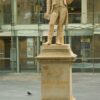

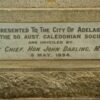
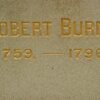
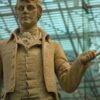
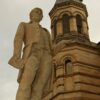

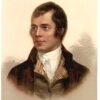
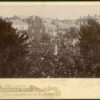
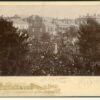
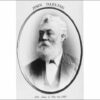
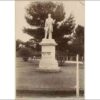

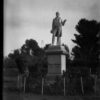

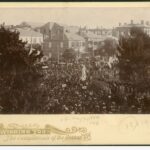
Comments